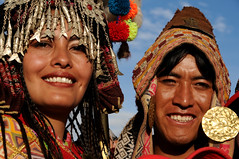The city of Cusco will dress up again to worship the Inca god as Peru's ancestors once did. The Inti Raymi ceremony brings together over 500 performers on June 24 at the center of the Sacsahuamán archaeological park esplanade. As usual, hundreds of foreigners and Peruvians are expected.
According to the Municipal Company of Festivities in Cusco (Emufec), organizer of this event, over 40 percent of tickets have been purchased by foreign tourists who come to live the most important holiday of the empire.
Tickets are priced at US $90 for adults and US $45 for children. This year a virtual system of reservations and information has been implemented. It contains data about the scenarios, schedules, and some tips for the event.
If you are interested in participating in the Inti Raymi access the web page emufec.gob.pe until June 15 and you can book your ticket.
The big celebration will begin in the morning in the temple of Coricancha. Then, the Inca and his entourage will go to the Plaza de Armas of Cusco and finally, after noon, the main ceremony will take place in Sacsahuamán.
You can enter freely to the first two venues, so be prepared to get there several hours in advance. To be part of the main ceremony, you must have tickets.
The tourism police, archaeological complex rangers and Emufec monitors will be in charge of security.
Tours recommended:
The Inca Experience - Peru Tours











